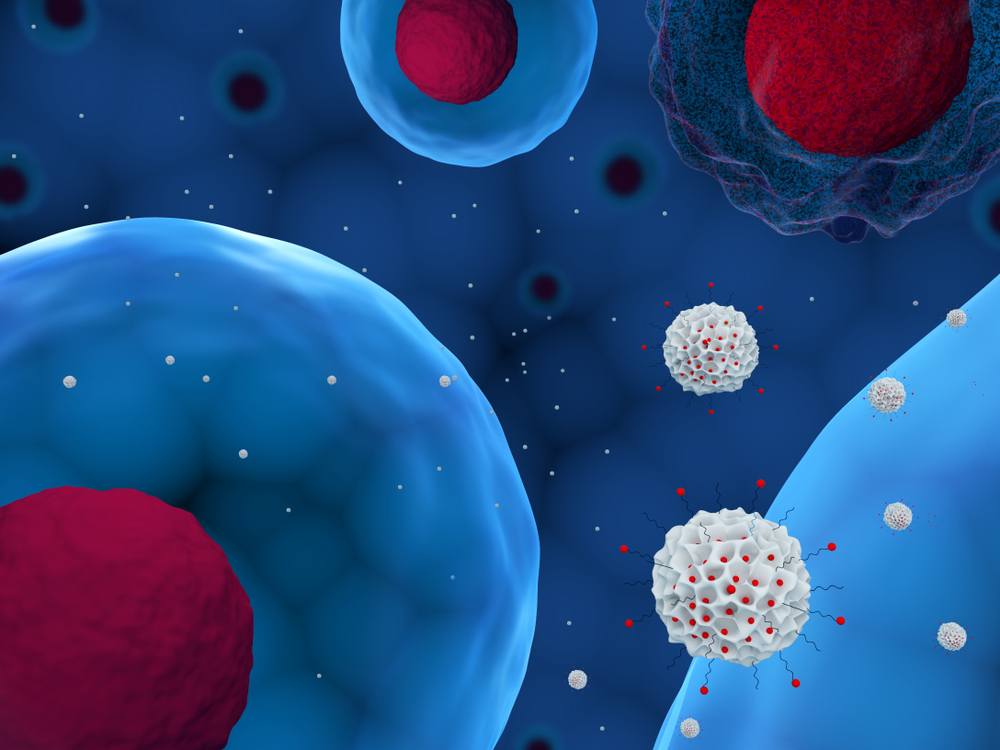Recently Identified Subset of Immune Cells Plays Role in MS, Study Suggests
Written by |

A newly identified population of immune cells contributes to inflammation in multiple sclerosis (MS), a new study suggests.
The study, “A distinct GM-CSF+ T helper cell subset requires T-bet to adopt a TH1 phenotype and promote neuroinflammation,” was published in Science Immunology.
MS is an autoimmune disease caused by the immune system erroneously attacking the body’s own healthy tissue, specifically the nervous system. Understanding exactly which parts of the immune system are involved in this attack is an ongoing area of research.
T-cells are a type of immune cell that play a critical role in the immune system. Some T-cells are classified as helper T-cells and they act by secreting signaling molecules that regulate the activity of other components of the immune system — either promoting or limiting inflammation, depending on which signaling molecules are released. Helper T-cells can be divided into different subtypes, some of which are still being identified.
Granulocyte-macrophage colony-stimulating factor (GM-CSF) is a signaling molecule that generally promotes inflammation. This molecule has been implicated in MS and other autoimmune diseases and many cell types, including helper T-cells, and are known to produce GM-CSF.
A previous study identified a subset of T-cells that make GM-CSF, but do not produce any of the other signaling molecules that are commonly used to classify T-cell subsets. These cells have been dubbed “GM-CSF-only” helper T-cells (abbreviated ThGM).
In the new study, a team led by researchers at Thomas Jefferson University replicated previous work demonstrating that ThGM could be identified in both human and mouse blood. The team also examined the role of these cells in mice with experimental autoimmune encephalitis (EAE), which is used frequently as a model of MS.
Whereas healthy mice generally had low levels of ThGM, mice with EAE had markedly increased levels of these cells, particularly in the central nervous system (the brain and spinal cord).
The researchers then evaluated whether the cells were encephalitogenic — that is, whether they could induce inflammation in the central nervous system. Infused ThGM triggered such inflammation in mice, to a similar extent as Th17 cells — another subset of helper T-cells that has been shown to be highly encephalitogenic.
Further experiments revealed some of the biochemical processes that govern the development and activity of ThGM cells, allowing the team to more precisely characterize these cells’ identity.
“We found that the ThGM cells have a distinct genetic profile compared to other subsets of T cells,” Abdolmohamad Rostami, MD, PhD, the study’s senior author, said in a press release. “It appears that ThGM cells are coming from a distinct lineage or origin, and therefore we’ve been able to define a set of criteria for identifying these cells.”
Another noteworthy finding concerns the protein T-bet, which is a transcription factor — a protein that helps regulate gene expression (the extent to which different genes are turned “on” or “off”). While T-bet was not required for the development of ThGM cells, it was needed for their encephalitogenicity. In other words, ThGM cells that lacked T-bet did not trigger brain inflammation in the mouse model.
Consistently, ThGM cells lacking T-bet also did not produce the pro-inflammatory signaling molecule interferon gamma (IFN-gamma), whereas ThGM cells with intact T-bet did produce IFN-gamma as part of their encephalitogenic activity.
“These data show that ThGM cells require T-bet to up-regulate IFN-gamma in the CNS [central nervous system] and facilitate development of encephalitis,” the researchers wrote.
Further characterization of these cells and their role in MS and other autoimmune diseases may pave the way toward new treatment strategies that specifically target the parts of the immune system that drive disease.
“Our findings have already given us important clues on what genetic markers and cytokine profile make this subset of T cells unique,” said Rostami. “This could allow us to develop therapies that selectively target this population of T cells, while leaving other T cells intact and avoiding widespread immunosuppression.”





